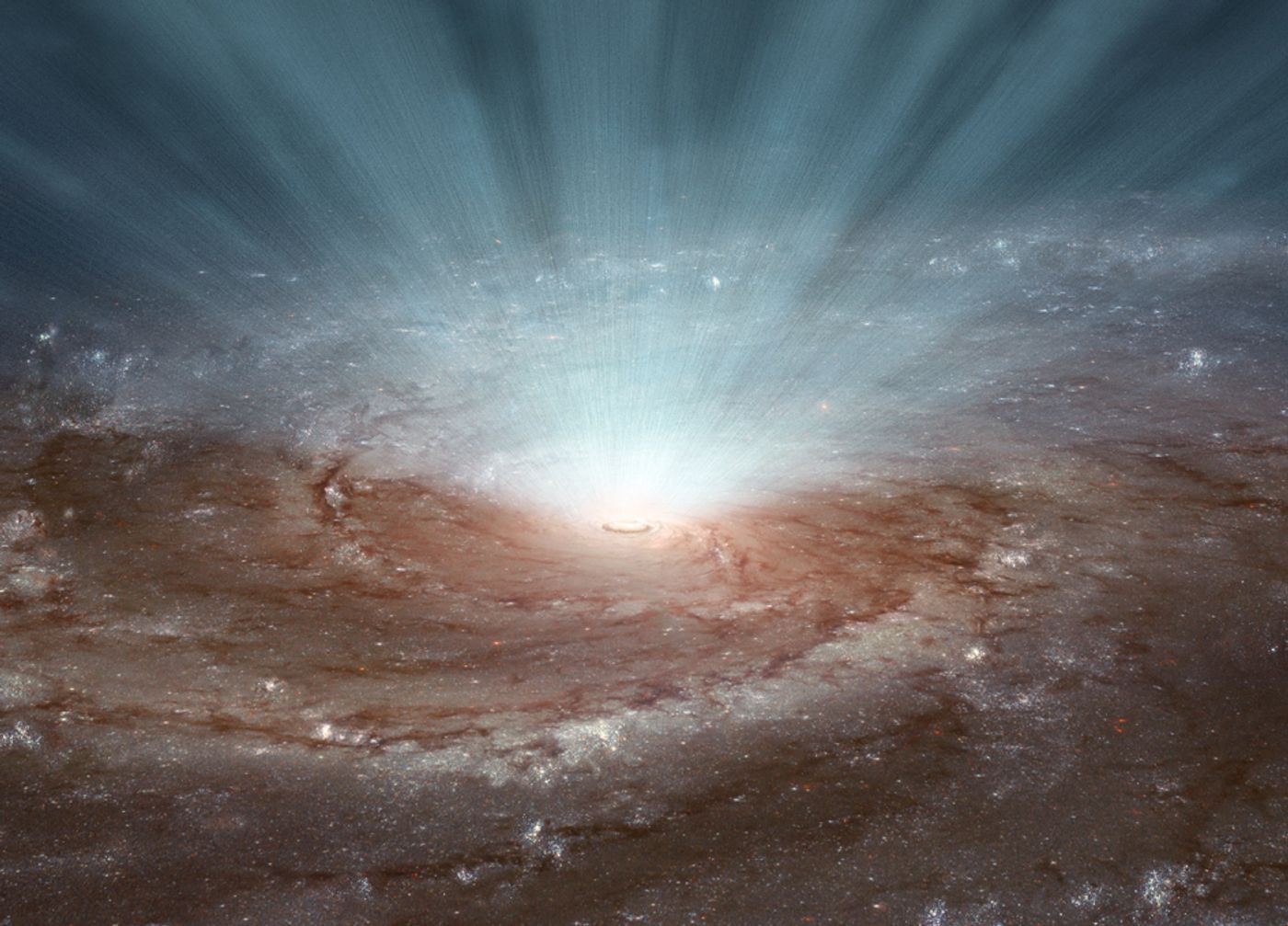New images from NASA's NuSTAR and ESA's XMM-Newton have finally given astronomers proof that space winds coming from supermassive black holes blow outward in all directions. The multi-directional flow of these powerful winds has long been suspected, but there was no evidence or data to firmly establish this theory.
For the first time, astronomers have measured these winds and their calculations have shown how they affect star formation.Fiona Harrison of the California Institute of Technology (Caltech) in Pasadena, California is the principal investigator of NuSTAR and a co-author on a new paper about these results appearing in the journal Science. "Knowing the speed, shape and size of the winds, we can now figure out how powerful they are."

Supermassive black holes shoot matter into their host galaxies creating winds that travel up to one-third the speed of light. These winds emit X-rays and this is how scientists measure their speed. PDS 456, an extremely bright black hole known as a quasar is more than 2 billion light-years sustains winds equal to the energy of a trillion suns. It was this black hole that gave astronomers their first glimpse at how much energy these winds produce and how that affects the supply of gas for star formation. The two space telescopes simultaneously observed PDS 456 on five separate occasions in 2013 and 2014. Since the two telescopes together can see both low and high energy light their observations complement each other.
Previous XMM-Newton observations had identified black hole winds blowing toward us, but the question of the winds blowing in all directions was still unanswered. With the addition of NuSTAR it was discovered that winds could come from the black hole not only in a straight beam but in a spherical shape as well.
"The complementarity of these two X-ray observatories is enabling us to unveil previously hidden details about the powerful side of the universe," said Norbert Schartel, an XMM-Newton project scientist at ESA.
Astronomers theorize that supermassive black holes and the galaxies that host them evolve together and regulate each other's growth. Observations of the central bulges of galaxies (the larger the bulge, the bigger the black hole) support this approach. This latest report demonstrates how a supermassive black hole and its high-speed winds impact its host galaxy. The more the black hole grows in size, the more matter is pushed out of it by the space winds. The less matter a black hole contains, the less stars it can create. Black holes need the matter that the winds carry away and this means fewer new stars.
PDS 456 is nearby, at least by space standards, and this along with its intense brightness gives scientists a rare opportunity to study it in detail
"For an astronomer, studying PDS 456 is like a paleontologist being given a living dinosaur to study," said study co-author Daniel Stern of NASA's Jet Propulsion Laboratory (JPL) in Pasadena.
NuSTAR is a Small Explorer mission led by Caltech and managed by JPL for NASA's Science Mission Directorate in Washington.









